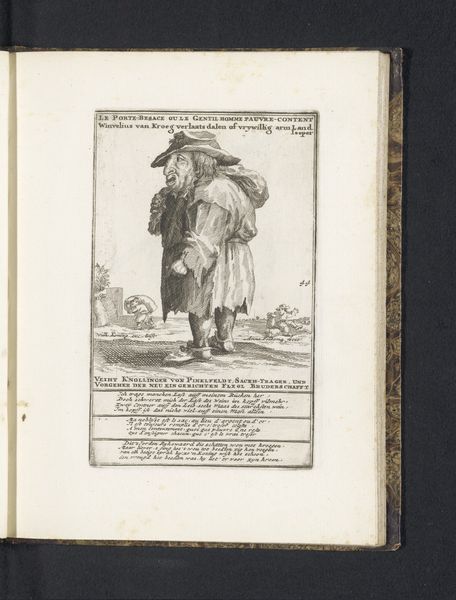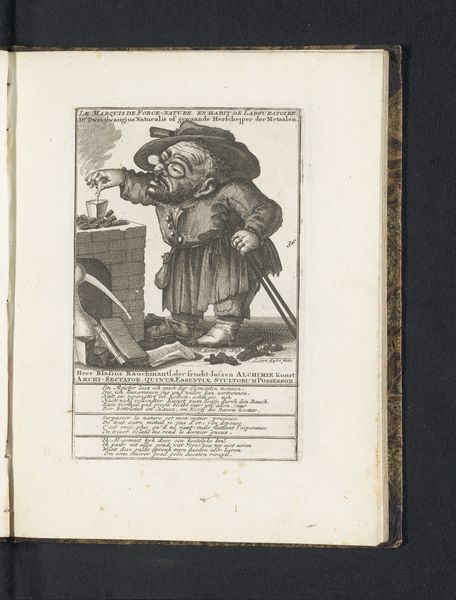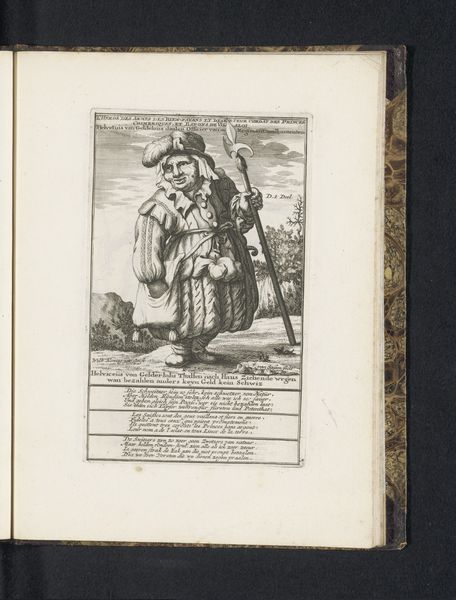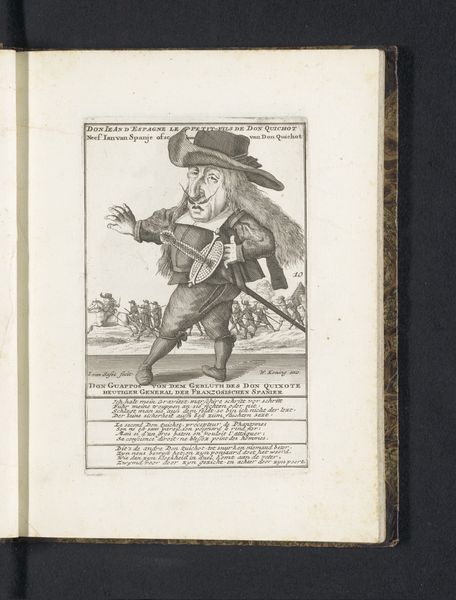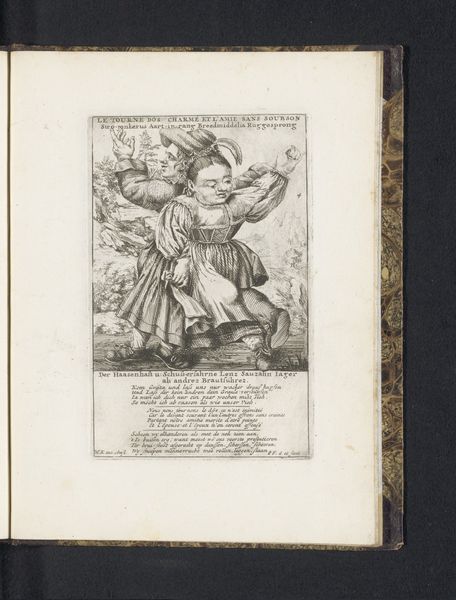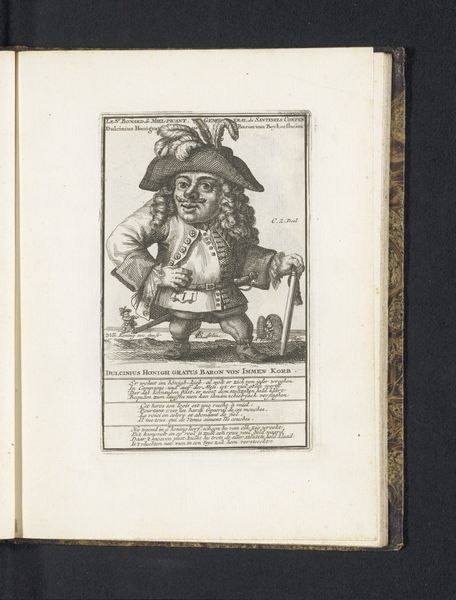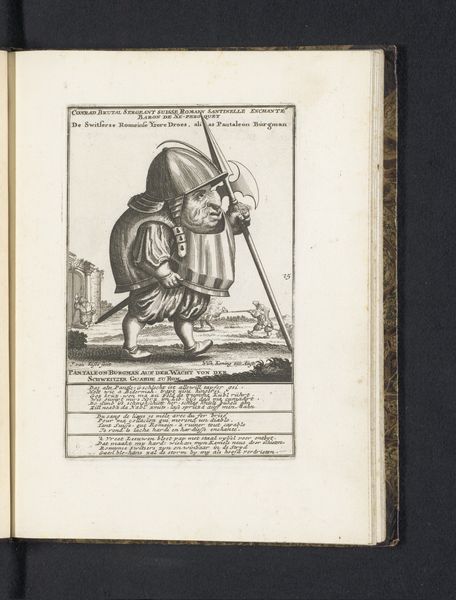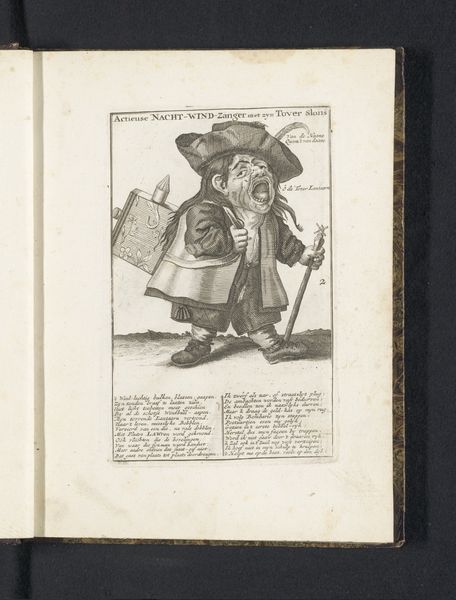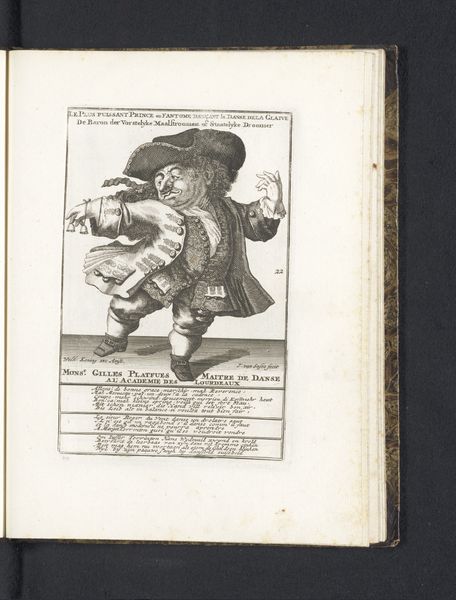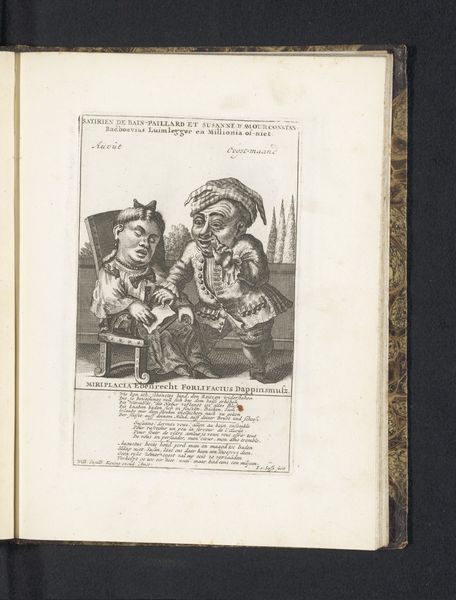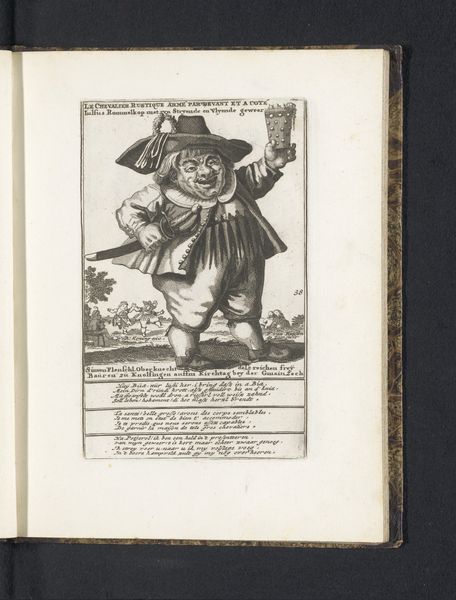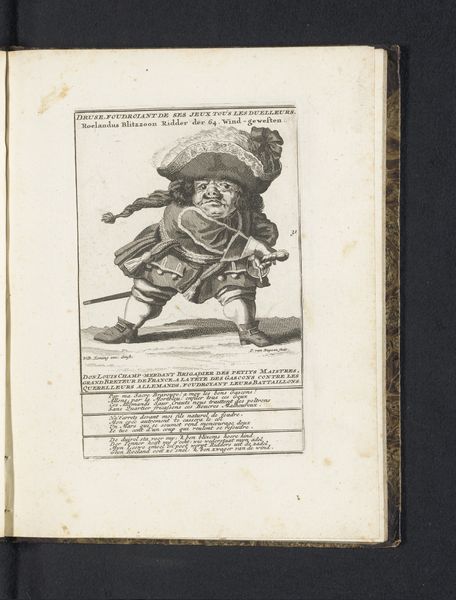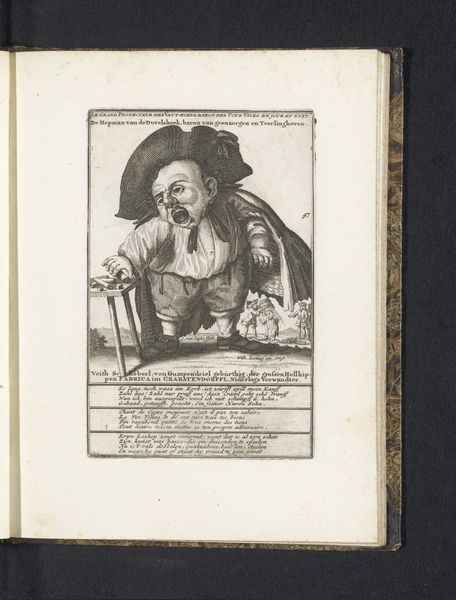
print, engraving
#
portrait
#
baroque
# print
#
figuration
#
genre-painting
#
engraving
Dimensions: height 169 mm, width 105 mm, height 227 mm, width 170 mm
Copyright: Rijks Museum: Open Domain
Curator: Pieter van Buysen Jr.'s engraving, "De dwerg John Skinner, 1720," from somewhere around 1718 to 1720, presents us with a fascinating glimpse into perceptions of difference. It's a Baroque piece rendered in print. What's your first impression? Editor: Well, beyond the antiquated textures typical of prints, it's the sitter’s garments. It looks almost theatrical. How much did the attire influence the subject, and the perception of Skinner himself? Curator: It's critical to consider that this work exists within a very particular social framework, one where displays of otherness were commodified. Think about the historical power dynamics inherent in representing someone whose physical stature deviated from the norm. Editor: Precisely. Look at the sharp contrast achieved solely through lines—the stippling effect around the subject creates depth, while the hat practically becomes a study in materiality through pattern. How do we read Skinner’s status based on these techniques? Curator: Status, in this context, feels almost like a performance. This engraving highlights questions of agency, representation, and how individuals outside perceived norms were often framed by those in positions of power. The added script below furthers this framing through what could be considered denigrating language. Editor: It's that text at the bottom that clinches it, isn't it? These material remnants of artistic interpretation provide avenues for modern interpretations about craft and subjectivities during Skinner’s time, allowing viewers to grapple with historic consumption of difference as spectacle. Curator: Absolutely. The genre-painting tag really strikes home here, where Skinner isn't really represented but *performed* within an existing framework of visual narratives. Editor: Yes, a troubling tension that is palpable in this carefully rendered image. Skinner's appearance is rendered for our benefit, we observe it while his inner-life, and humanity, remains closed off to us. Curator: Thinking critically about who controls the narrative becomes crucial when engaging with works like this. We are responsible for dismantling visual languages rooted in dehumanization. Editor: Indeed, examining historical materiality—even something as "simple" as a line etching—unearths surprisingly complex webs of labor, perception, and perhaps more critically, power dynamics, which the piece lays bare in the very fabric of its existence.
Comments
No comments
Be the first to comment and join the conversation on the ultimate creative platform.
